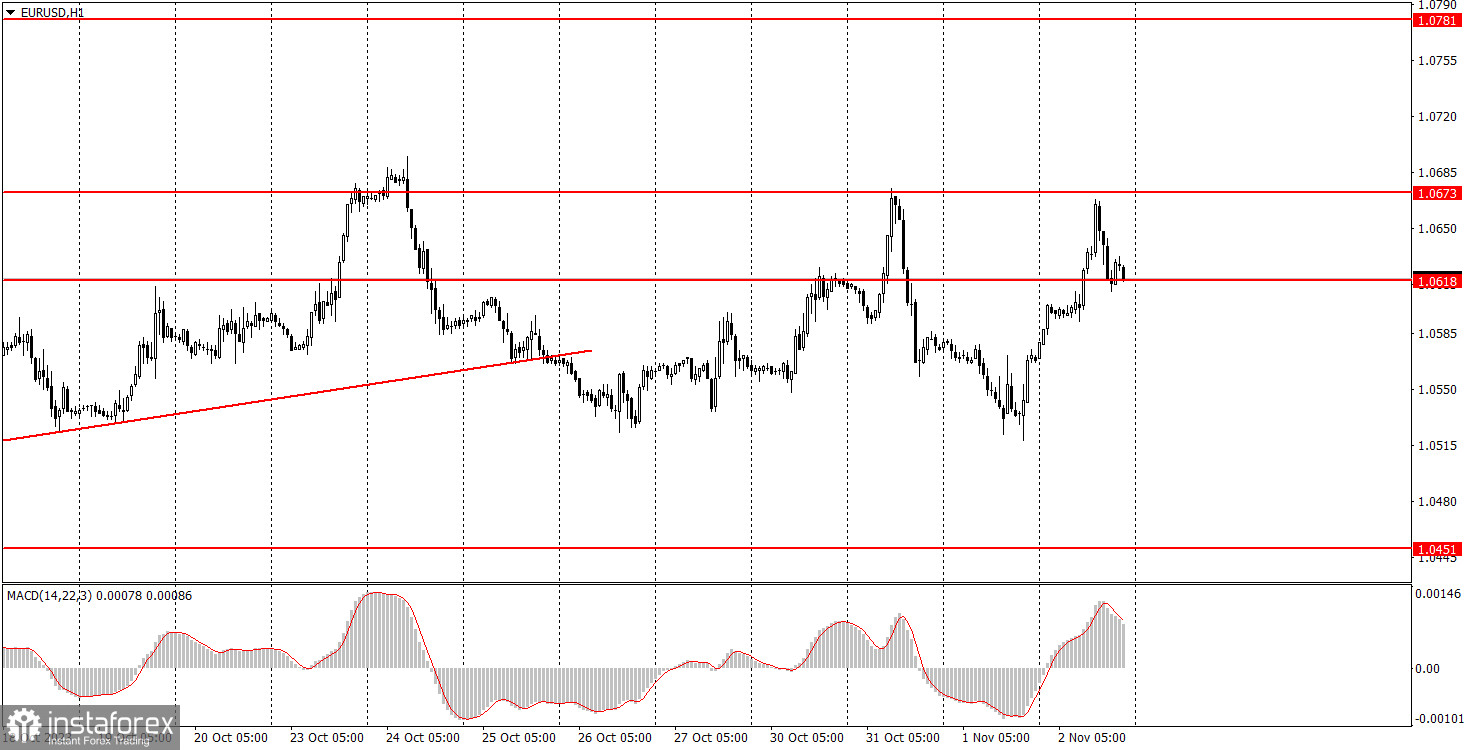Analyzing Thursday's trades:
EUR/USD on 30M chart

EUR/USD traded in different directions on Thursday. The pair traded higher in the first half of the day, which was unlikely to be driven by macroeconomic data. But it sharply made a reversal during the U.S. session, which also was unlikely to be provoked by data or fundamentals. There were no significant reports on Thursday, but the Bank of England announced the results of its meeting, which influenced movements in both pairs. However, there was no clear consensus on the direction for the euro and the pound. The BoE kept the interest rate unchanged. Therefore, we continue to observe purely technical movements, such as a flat or correction. Lately, the price has been trading in a limited price range, indicating that the market is taking a short break.
EUR/USD on 5M chart

On the 5-minute chart, several trading signals were generated, but volatility remained relatively modest. The first sell signal turned out to be a false signal as the price bounced from the 1.0612 level, and it didn't even fall by 15 pips. Subsequently, the price consolidated above the 1.0612-1.0618 range, afterwards it rose by approximately 40 pips, falling just 5 pips short of the target level of 1.0673. Hence, no sell signal was generated, and the price eventually returned to the 1.0612 level, where the trade was closed at a stop-loss, resulting in no profit or loss. To reiterate, even if it's not a pure flat, it is a type of movement that is quite close to it. Therefore, several trading signals were both false or weak.
Trading tips on Friday:
On the 30-minute chart, the pair has settled below the ascending trend line, but that isn't important right now since the market is in a flat state. Initially, it appeared as a bullish correction, but now it seems more like a flat. The key levels on the 5M chart are 1.0391, 1.0433, 1.0451, 1.0483, 1.0526, 1.0568, 1.0611-1.0618, 1.0673, 1.0733, 1.0767-1.0781, 1.0835. A stop loss can be set at a breakeven point as soon as the price moves 15 pips in the right direction. On Friday, there are no important events lined up in the European Union. From the US, traders may look to the release of reports on Non-Farm Payrolls, unemployment, and the ISM Business Activity Index for the services sector. This should be sufficient to stir some market reaction, so the volatility may gradually increase.
Basic trading rules:
1) Signal strength is determined by the time taken for its formation (either a bounce or level breach). A shorter formation time indicates a stronger signal.
2) If two or more trades around a certain level are initiated based on false signals, subsequent signals from that level should be disregarded.
3) In a flat market, any currency pair can produce multiple false signals or none at all. In any case, the flat trend is not the best condition for trading.
4) Trading activities are confined between the onset of the European session and mid-way through the U.S. session, post which all open trades should be manually closed.
5) On the 30-minute timeframe, trades based on MACD signals are only advisable amidst substantial volatility and an established trend, confirmed either by a trend line or trend channel.
6) If two levels lie closely together (ranging from 5 to 15 pips apart), they should be considered as a support or resistance zone.
How to read charts:
Support and Resistance price levels can serve as targets when buying or selling. You can place Take Profit levels near them.
Red lines represent channels or trend lines, depicting the current market trend and indicating the preferable trading direction.
The MACD(14,22,3) indicator, encompassing both the histogram and signal line, acts as an auxiliary tool and can also be used as a signal source.
Significant speeches and reports (always noted in the news calendar) can profoundly influence the price dynamics. Hence, trading during their release calls for heightened caution. It may be reasonable to exit the market to prevent abrupt price reversals against the prevailing trend.
Beginning traders should always remember that not every trade will yield profit. Establishing a clear strategy coupled with sound money management is the cornerstone of sustained trading success.





















